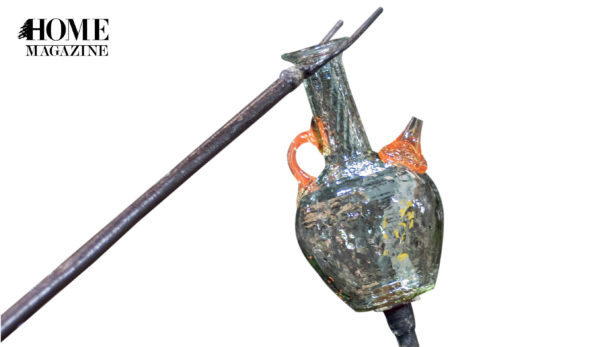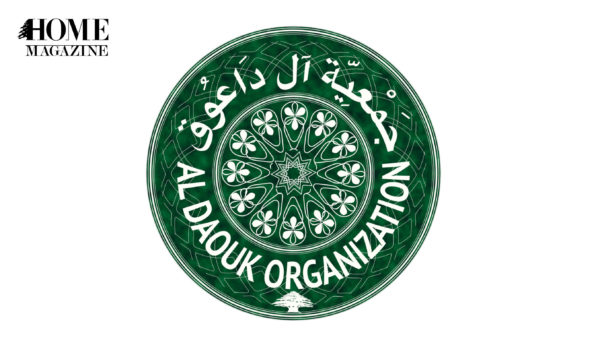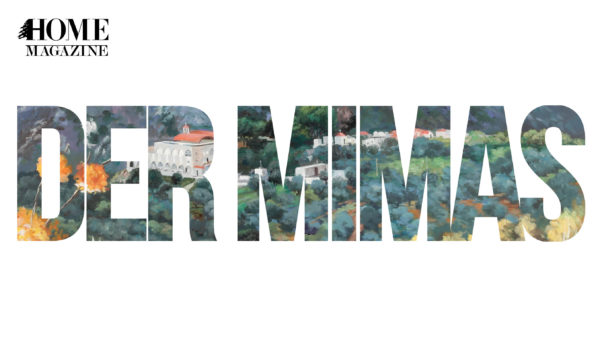Photos by: Claudia Matta
The sea is glistening to my left. The sun is in my eyes. Still 10 a.m. but already too bright and crowded on the highway. Windows rolled up and air conditioning on to keep the noise and heat, somewhat, at bay, we crawl our way north, round Jounieh Bay, past Tabarja. A stop for some breakfast, please.
Kaak ‘aa zaatar. Laban ayran for some. The teenagers in our crew go back for seconds, ‘aa Nutella. Refueled, we pile back into the car. Yalla? Yalla! No more stops. Off again, in search of an dventure on a summer day. A few exit signs later, we find it: Anfeh.

We drive into the little seaside town whose name humorously translates to “my nose.” It is a nose; a rocky peninsula stretching into the Mediterranean Sea. Carved into stone are stunning whitewashed houses with blue windows and blue doors. Blue fishing nets and boats against a blue sky. Weather vanes spinning lazily.
The road only goes as far as the shore. We tumble out of the car excitedly.
Saba’! To the tip of the nose! Bring the thermos of Turkish coffee!

We reach the precarious edge, all victorious, and wait for our breaths to catch up, then collapse on the rocks, and taste coffee and the view; both are deliciously intense.
Sufficiently sun-soaked, the leader of our gang suggests an exploration of the town. We set off, down winding alleyways lined with charming fishermen’s huts. On the hunt for some history, some seafood and a sea breeze, we come across little gems: engravings, fossils, salt fields, wine presses and caves nearly 3,000 years old.
A lighthouse. A crusader’s citadel once stood majestically on the mound; of its 12 towers and two fortified trenches, all that remains is a pillar. Our Lady of the Wind—a Byzantine church built to invoke the Virgin Mary’s protection of sailors. We huddle inside and barely make out the fresco in which she is calming a storm.

We can hear the sea echo around us in waves, as if we were in a giant seashell. We speak in whispers; there may be ghosts.
There are ghosts!
A villager startles us. Of the armies that tried to invade us! “Us” – our own intrepid ancestors, the traders, martyrs, star-crossed lovers. The man tells us stories of secret passageways, acoustic jars, keys thrown to sea, miraculous fish and a solitary nun who singlehandedly rebuilt a monastery.

He shows us two more churches from two other epochs: Saint Catherine, and Saint Simeon and Gabriel. By then we are well cultured and hungry. Lunch? Lunch, straight from the sea!
Mallifa, sultan Ibrahim, li’os, bizr, ‘raidis, sabbidij. And of course, the classics: hummus, fattoush and two trays of batata mi’liyyeh.
A three-hour Lebanese lunch by the sea in a white and blue Lebanese town. Stuffed, we wander back near the water and lie down. Quiet serenity.

Not for long.
Splash! Seawater on my face, salt in my mouth. Adults turned into children.
Shrieks, laughs. Soon we are all in the cool blue green water. A perfect way to end the day.
Driving back to Beirut and real life, sunburnt and exhausted and happy, I think of the last lines of a poem by Gibran Khalil Gibran:
The high tide will erase my footprints,
And the wind will blow away the foam.
But the sea and the shore will remain.
From “Sand and Foam,” 1926
So will places like Anfeh, I hope.

































